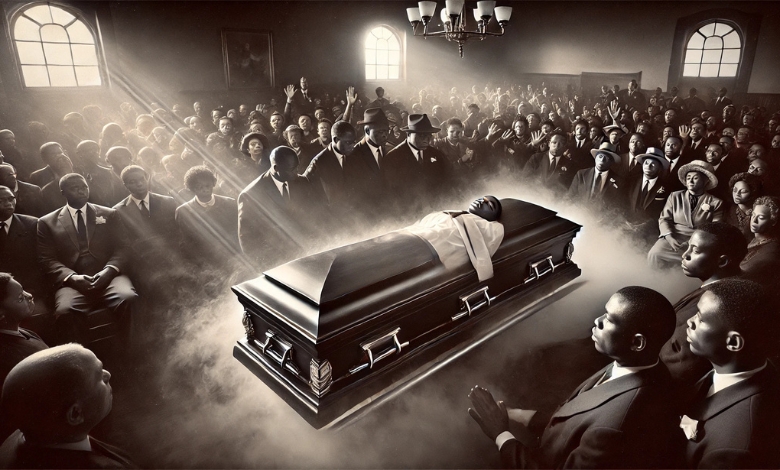Explore how the Jet magazine pictures of Emmett Till exposed racial violence, sparked change in 1955, and remain relevant in today’s fight for justice.
Few moments in history manage to encapsulate the brutal realities of an era as powerfully as the Jet magazine photos of Emmett Till. These images, first published in 1955, became an unflinching symbol of the horrors of racial violence in America and galvanized a generation to demand justice and equality. This article dives into the profound impact of those pictures, the courageous choices behind their publication, and why they remain relevant in today’s fight against injustice.
What You'll Discover:
Setting the Stage: America in the 1950s
To truly understand the seismic impact of Jet magazine’s decision to publish photos of Emmett Till’s disfigured body, you first need to grasp the societal backdrop. The United States in the 1950s was a nation grappling with stark racial divides. Jim Crow laws enforced segregation in the South, while systemic racism permeated every corner of American life. Black voices were often stifled, and acts of violence against African Americans were frequently met with silence or outright indifference.
This was the world in which Emmett Till, a 14-year-old African American boy from Chicago, was brutally murdered while visiting family in Mississippi. Accused of whistling at a white woman, Carolyn Bryant, Till’s “crime” led to his kidnapping, torture, and eventual lynching by two white men, Roy Bryant and J.W. Milam. What might have been another tragic, unreported act of racial violence became a national flashpoint thanks to the bravery of Till’s mother and the publication choices of Jet magazine.
Mamie Till-Mobley’s Radical Choice: “Let the People See”
It’s impossible to discuss the Jet magazine photos without recognizing the pivotal role of Mamie Till-Mobley, Emmett’s mother. In the wake of her son’s horrific murder, Mamie made an extraordinary decision: she insisted on an open-casket funeral. Her reasoning was straightforward yet profoundly radical for the time. She wanted the world to see what racism had done to her child.
When asked about her choice, Mamie famously said, “Let the people see what I’ve seen.” This single decision transformed her private grief into a public rallying cry. Mamie understood that the power of visual evidence could cut through apathy and denial, compelling even those far removed from the reality of racial violence to confront its gruesome truth.
Jet Magazine’s Brave Stand
At a time when mainstream media outlets avoided controversial stories about racial violence, Jet magazine emerged as a bold platform for Black voices. Founded in 1951 by John H. Johnson, Jet was a weekly digest catering to African American readers, covering everything from entertainment to civil rights.
When Mamie Till-Mobley approached Jet with her story and photographs of Emmett’s mutilated body, the magazine’s editors faced a critical decision. Publishing the images was a significant risk. Not only could it alienate advertisers, but it also put the publication’s staff in potential danger. Despite these risks, Jet’s leadership chose to print the photos.
The decision was groundbreaking. The gruesome images of Emmett’s face—swollen, beaten, and unrecognizable—were printed alongside detailed accounts of his murder and the subsequent trial. The photos shocked readers, many of whom had never before been confronted with such stark evidence of racial violence.
The Ripple Effect: Igniting the Civil Rights Movement
The publication of Emmett Till’s photos didn’t just elicit shock; it ignited action. Across the United States, people—Black and white—were moved to demand justice. The photos became a catalyst for the burgeoning Civil Rights Movement, galvanizing activists and organizations.
Rosa Parks, often celebrated as the “Mother of the Civil Rights Movement,” later revealed that she thought of Emmett Till when she refused to give up her seat on a Montgomery bus later that year. The outrage over Till’s murder and the acquittal of his killers by an all-white jury added fuel to the fight against systemic racism, inspiring events like the Montgomery Bus Boycott and the March on Washington.
The images also forced international audiences to confront the hypocrisy of America’s claims of freedom and equality. They were a stark reminder that, while the U.S. was positioning itself as a global leader in democracy during the Cold War, it was simultaneously failing to uphold basic human rights within its borders.
Why the Pictures Still Resonate Today
Decades later, the Jet magazine photos of Emmett Till remain profoundly relevant. In the age of social media and smartphones, images and videos of racial injustice continue to spark movements, from Trayvon Martin to George Floyd. Just as Mamie Till-Mobley and Jet magazine used visual evidence to galvanize change, today’s activists rely on technology to bring attention to systemic inequities.
The story of Emmett Till also underscores the enduring power of storytelling and the importance of controlling one’s narrative. For generations, Black Americans’ stories were told by others, often in ways that minimized or erased their experiences. The publication of Till’s photos marked a significant moment in reclaiming that narrative power.
A Legacy of Courage and Change
The legacy of Jet magazine’s decision to publish the pictures of Emmett Till is one of courage, change, and an unwavering commitment to truth. It’s a reminder that real change often requires confronting uncomfortable truths head-on. Mamie Till-Mobley’s decision to let the world see her son’s face was not just a personal act of bravery but a transformative moment for a nation on the brink of change.
In revisiting this history, we are reminded of the power of journalism to challenge injustice, the courage of individuals to demand accountability, and the unyielding impact of truth—however painful—in shaping a better future.
Key Takings
- The Jet magazine photos of Emmett Till remain a powerful symbol in the fight for racial justice.
- Though the tools have evolved, the mission to expose injustice, demand accountability, and achieve true equality continues.
- Mamie Till-Mobley’s courage and Jet magazine’s boldness are reminders that change starts with confronting hard truths.
- History may not repeat itself exactly, but its echoes remind us to stay vigilant and committed to justice.





